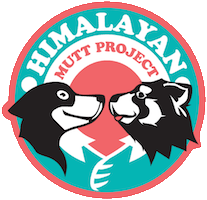Adventures of Kalo the Wanderer
- Debby Ng
- Jan 3, 2019
- 3 min read

Kalo the wanderer surveys his territory - Manang Valley. Our canine distemper study identified 93 dogs in Manang's Upper Valley. We know where these dogs come from, if they were born in the valley or were brought in from elsewhere. We have learned what they eat, how many litters they have had, and how many of their pups survived or were given away. We are gradually building up a picture of the dog demography in this area. Understanding this will help us design and implement actions to manage the dog population in the area.

Here's an example of how understanding demography helps with planning - to know where to build a primary school, we need to know which neighbourhoods have the most number of children aged between 7-12. If we want to build a kidney dialysis center, it is useful to know where dialysis patients are most densely located. To know where to target a campaign to stem the breeding of mosquitoes to fight malaria, we need to know which human settlements are most closely located to mosquito breeding grounds. To reduce the conflict of dogs and wildlife, and control the spread of diseases, we need to find out what diseases the dogs have, where they are located and how they move between villages - here is where Kalo comes into the story.

Kalo was first sighted playing with street dogs in Manang village (above). He had a friendly demeanour and was responsive towards people. He was the largest dog of them all and he certainly flexed that fact to keep unfavourable dogs away.

A few days after we met him in Manang village, Kalo was spotted in Ngarwal by Jules (our veterinary volunteer above). During the canine distemper survey, all the dogs were marked so that they would not be accidentally sampled twice. At first, Jules thought she had found a dog that looked just like Kalo until she noticed his mark!

One evening, a rumour began to circulate about a cow herder that had lost one of his cattle to a snow leopard. We heard that the carcass of the cow was still lying in the grazing fields where it was killed. The likelihood of the snow leopard returning to feed on its kill was high. So in the cold and wee hours, Ajay (above), Mukhiya and I set out with the hope of encountering this elusive feline.

We saw several blue sheep (Pseudois nayaur) that morning grazing in the terraced fields. Here's a pair from a herd of about eight. Also called the Himalayan bharal or naur, blue sheep are wild herbivores resembling goats that can be found in the high Himalayas.

And... guess what, there was Kalo, harassing the herd. He gave chase to the wild animals that quickly bolted for the cover of the alpine scrub. Although the blue sheep were not hurt this time, they spend precious energy and endure the stress of such an encounter that could have impact on their health in the long term. Free-ranging dogs are an ever present problem for wildlife in these landscapes. Notice how well the blue sheep blend in with their landscape. The first response of blue sheep when they sense a predator is to stay motionless and hope that their predator loses sight of them. They bolt only when given chase, conserving precious energy that they scour from this arid landscape.

Kalo wanders the trails in Ghyaru. Perhaps the next time we return, we can put a GPS collar on him to find out how far and wide he roams. Understanding the movement and territories of these free-roaming dogs can help us understand how better to manage them to control the spread of disease between dogs, and between dogs and wildlife. These are some of the things we will investigate as we continue our work in the Himalaya!
This study was made possible by a grant from the National Geographic Society.
All images 2018 © Debby Ng/National Geographic
































Comments